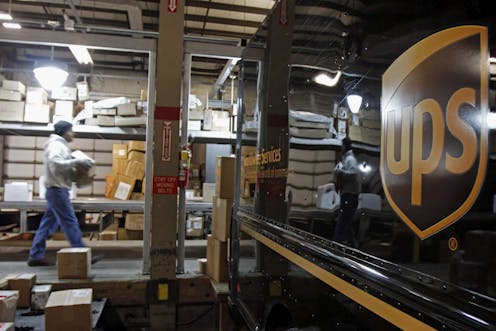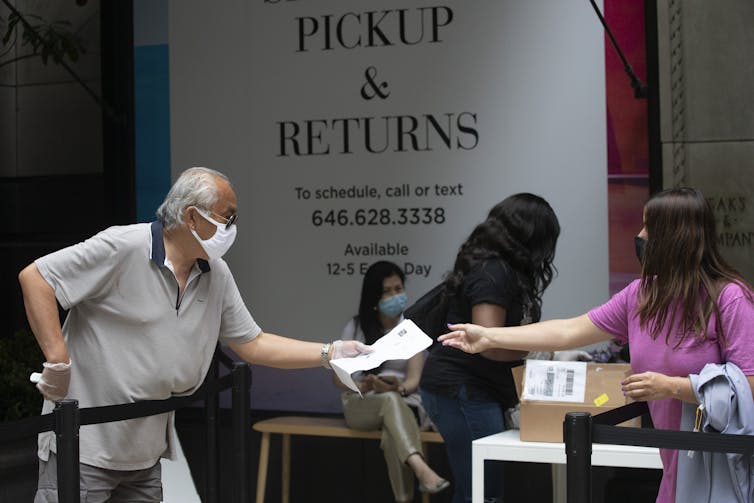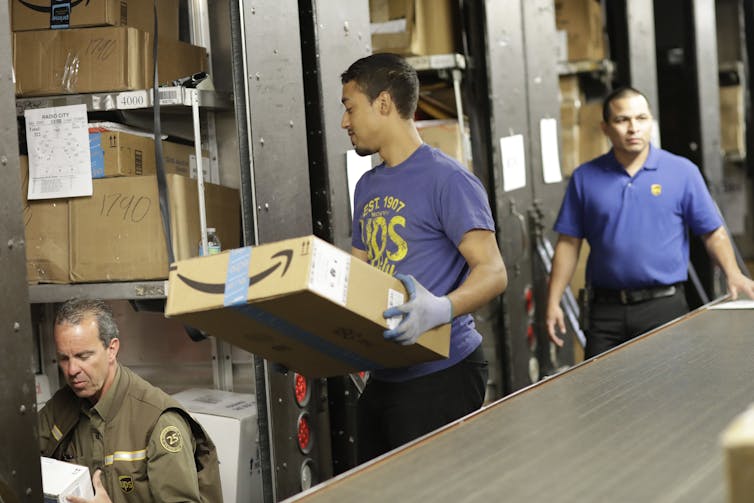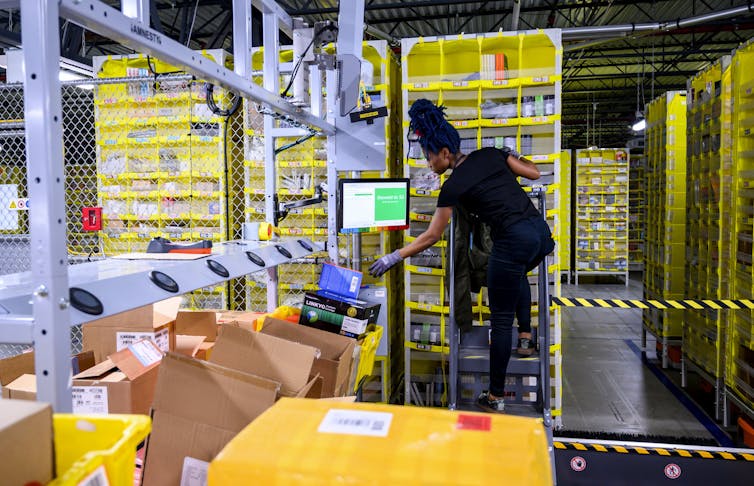Just in time for back-to-school shopping: How retailers can alter customer behavior to encourage mor
Returns cost companies billions of dollars in lost sales. They also generate emissions and packaging waste. Two logistics experts offer some tips from psychology for more sustainable returns.

Back-to-school sales are underway, and people across the country will be shopping online to fill up backpacks, lockers and closets – and they’ll be taking advantage of free returns.
Making it easy for customers to return items at no cost started as a retail strategy to entice more people to shop online. But it’s getting expensive, for both retailers and the planet.
In 2022, retail returns added up to more than US$800 billion in lost sales. The transportation, labor, and logistics involved raised retailers’ costs even higher. Product returns also increase pollution, greenhouse gas emissions and waste in landfills, where many returned products now end up.
So how can retailers fix this problem and still provide quality customer service?
We conduct research in reverse logistics, focusing primarily on the intersection of retail returns and customer behavior. Here are some insights that can help reduce the abuse of free returns and lower costs without losing quality.
Nudging: In-store vs. shipped returns
Where a product is returned makes a difference. Items returned to the store can be restocked an average of 12 to 16 days faster than those that are mailed. Mailed returns also cost companies more: The difference between the most expensive shipped returns and least expensive in-store returns is $5 to $6 per item. That adds up quickly.
Studies show that customers may be willing to change their return behavior – with a little help.
Behavioral nudges are a technique used in decision-making to steer a person toward a specific behavior. Putting candy at eye-level at the grocery store checkout counter to encourage impulse purchases is an example, or making employee participation in a 401(k) savings program the default option. Another type of nudge involves providing more information.
If you’ve ever shopped online and seen statements like “10 out of 10 customers recommend this product” or “Only 2 items left in stock,” you have experienced the use of information to influence your decision. Nudges emphasizing sustainability may also appeal to customers and have a positive impact on return behavior.

In a recent survey, 94% of merchants said customers were concerned about sustainability, according to a report from Happy Returns, a logistics firm that works with retailers.
However, a much lower percentage of customers actually make sustainable return decisions. That suggests that customers do not fully understand the environmental impact of their return choices – and it offers a way for retailers to help.
Our research found that when customers were given information about the environmental impact of the different return options, they were nearly 17 times more likely to choose an in-store return rather than returning an item by mail. Nudges like this offer a simple and inexpensive way for retailers to alter customer behavior in favor of sustainability.
Picking up returns to speed up the process
Some customers request to return an item but then wait weeks before mailing it. It’s known as customer procrastination, and it also has a cost. The longer these products remain unprocessed, the more value they can lose.
High-priced electronics, such as laptops and tablets, have short product life cycles and lose value quickly, sometimes at a rate of 1% per week. Seasonal items, such as back-to-school supplies or winter coats, become more difficult to resell if retailers get them back on shelves after demand has bottomed out. A returned item’s resale value determines its destination: It can end up back on store shelves, sold to liquidators for pennies on the dollar or sent to a landfill.

A home pickup service for time-sensitive returns could reduce delays in a way that is also useful to the customer. A small number of pickup vehicles collecting returns from customers could avoid multiple shipments, reducing total miles traveled and cutting vehicle emissions, while also avoiding the need for each return to be individually packaged.
Our research found that a pickup service could help retailers collect returns faster and reduce product value loss, particularly for high-priced products and products that lose value quickly, such as consumer electronics.
How to change policies without losing customers
While several retailers have stopped offering free returns or changed their return policies over the past year, our research suggests that changes affecting all customers might not be the best choice.
Broad policy changes that affect everyone might involve limiting the number of returns per customer, charging a fee for returns or shortening the window for returns. An alternative is a targeted return policy that applies only to people who abuse the system. For example, retailers can restrict free returns for people who repeatedly buy more items than they intend to keep, knowing they can return the rest.

We conducted two studies to explore how customers would view changes to a retailer’s return policies.
In the first study, 460 participants were significantly more likely to speak negatively about the retailer – a fictitious company, in this case – when the retailer’s returns policy change applied to everyone and affected everyone equally.
Our follow-up study asked 100 online customers about their thoughts regarding generalized versus targeted policy changes. When the return policy change targeted customers who abused returns, 44% of the participants expressed positive emotions, and only 13% expressed negative emotions.
Those positive emotions included comments like, “I would feel proud of the company for taking action against people who try to cheat the system.” Such responses indicated that participants understood that cheaters were increasing the price paid by everyone.
But when the return policy change applied to everyone, 64% of the participants expressed negative emotions. Nearly half indicated they would speak negatively about the policy change to family and friends, and 42% said they would shop at another store.
Other ways to help customers make better decisions
Retailers can also change the online shopping experience before the customer makes a purchase to avoid the need for returns.
One way is to obtain detailed customer feedback on returns and use that to provide better product descriptions to customers. Another is to avoid incentivizing the wrong behavior. Well-intentioned free shipping on orders over a set dollar amount could encourage customers to overpurchase and later return products.
Posting videos of items for sale can help buyers spot problems that photos might hide. Virtual fitting rooms that use an avatar of the customer to try on clothes virtually can help customers choose the right size the first time.
There is no doubt that managing retail returns is a difficult task. To make the process more sustainable, retailers need to help customers make choices that limit the need for a return or that minimize the impact of a return on the environment and, of course, the retailer’s bottom line.
The authors do not work for, consult, own shares in or receive funding from any company or organization that would benefit from this article, and have disclosed no relevant affiliations beyond their academic appointment.
Read These Next
As US hunger rises, Trump administration’s ‘efficiency’ goals cause massive food waste
Despite the administration’s claim of streamlining the government to make its operations more efficient,…
George Plimpton’s 1966 nonfiction classic ‘Paper Lion’ revealed the bruising truths of Detroit Lions
George Plimpton, then a 36-year-old literary editor, endured the brutal realities of a professional…
Pentagon investigation of Sen. Mark Kelly revives Cold War persecution of Americans with supposedly
President Donald Trump and his supporters cast their domestic opponents as disloyal, traitorous or worse,…





